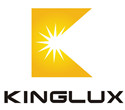|
SMD (Surface Mounted Device) LEDs are the most common LED grow light you can find on the market.
Though both SMDs and COBs share similar characteristics such as wide light spectral spectrum, long lifespan, and efficient light output, here are some of the key winning points of COBs over SMDs.
Improved lumen density
Since COBs can be packed with more LED chips on the same substrate than SMD, it has a stronger light intensity and higher uniformity.
More focused light
Because more led chips are contained within an area and with the support of a reflector, the light produced is denser. With the use of a reflector, you can have a stronger and more vibrant light intensity for flowering plants.
Smaller size
A 200 lumen COB LED array can be much smaller than a 200 lumen SMD because COB makes better uses of the space.
Less heat
Because fewer components are used to make these LEDs, and the thermal sink is pointed toward the circuit board, COBs tend to emit less heat than traditional LEDs. But the material of the COB substrate, the heat sink structure and the board circuit design play (Source) an important role in heat distribution. That's why you should look for a quality COB LED.
However, you also must know the downsides.
COBs have less versatility than SMD LEDs.
Even though you cannot have as many as LED chips on each array, SMDs allow accommodating more than one contact. And a single chip can have up to 3 diodes - each diode also has a separate circuit. This permit the SMD chips to have multiple colors - blue, red, green diode. Also, you can mix these colors by changing the light output of each color.
Meanwhile, even though COB LEDs have many diodes, they only accommodate 2 contacts and 1 circuit. That means you often see that COB LEDs produce a single color wavelength from time to time, and you cannot adjust it like other SMD LED lights.
SMDs generate more widespread light output.
It gives more light distribution than COBs. In this sense, traditional SMDs have a better light coverage and penetration for the plant canopy, which makes it more convenient to grow in an opener grow area.
Comparison between COBs and other grow lights
You can find below a quick comparison table between COB LED and other light technology
|
Cost
|
High
|
Medium
|
Medium
|
High
|
Low
|
|
Light Intensity
|
Medium-Strong
|
Strong
|
Low
|
Low
|
Low
|
|
Light spectrum
|
Full spectrum
|
Short
|
Short
|
Long
|
Short
|
|
Heat Output
|
Low
|
High
|
Medium
|
Medium
|
Low
|
|
Size
|
Small
|
Large
|
Large
|
Large
|
Small
|
|
Lifespan
|
50,000
|
15,000
|
15,000
|
20,000
|
10,000
|
This leads to the next section
Why Choose COB LED Grow Lights?
The table below shows you that besides the cost, COB LED tends to win over other grow light types in every criterium. Let's blast through the details.
Light intensity
This is the number one factor that affects your plant growth, especially flowering plants. Regarding this, COB LED is only behind HPS, it has a stronger light output than other light types, even the traditional LED grow lights.
Light spectrum
All modern LED grow lights, including COB LEDs, are known for their widest spectrum wavelengths. Some bulbs also include 12-color spectrum colors, including IR (infrared ray) and UR (ultraviolet ray)
Heat Output
Heat ventilation is also a strong point of COB LED. Modern technology allows these LEDs to produce strong light output while controlling the heat emitted. Some high-end COBs also use quality substrate, drivers, fans, which control the heat to the minimum.
Size
Though COB LEDs with more power will be bigger, you'll never have such a compact light that still generate lots of light like COB, which makes it better suited for small areas.
Lifespan
Depending on the COB material build, most COBs can last from 30,000 - 60,000 hours. This is several times higher than other grow light types.
|


